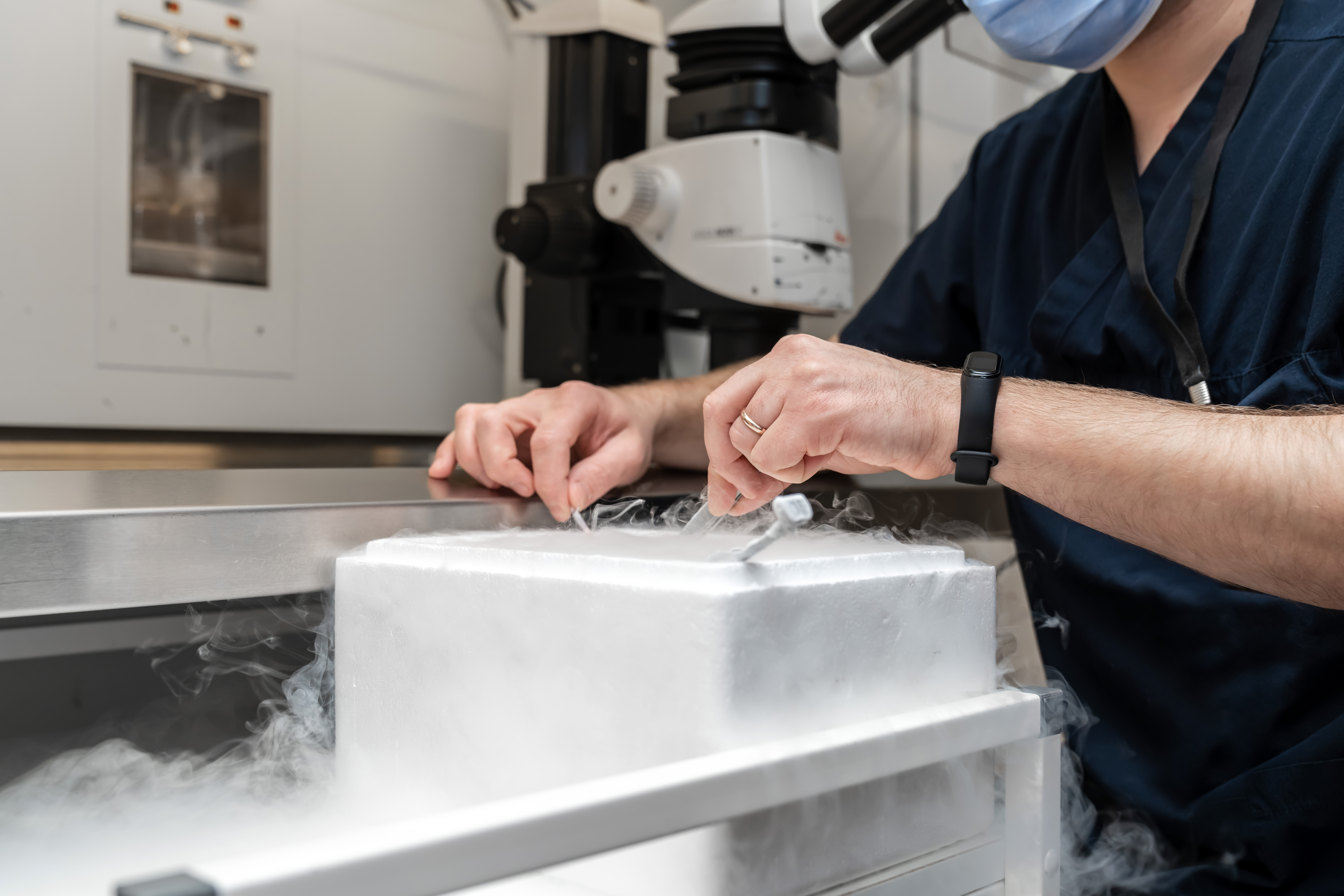We separately covered reasons why you might have labor induced, ranging from being “overdue” to preeclampsia to poor fetal growth. Especially if induction wasn’t your original plan for how labor would start, you may dread being hooked up to an IV and fetal monitoring equipment, and fear needing an epidural to cope with the Pitocin-induced contractions. On that front, we have some good news: Pitocin isn’t your only option for labor induction, there are alternatives.
Here, we’ll cover a full-spectrum view of labor induction methods, from the least to most invasive. Know that when “D-Day” comes, you may experience multiple methods, layered together. Depending on your medical provider, you might begin with one intervention, then receive another in a scheduled window of time if labor isn’t progressing.
Talk with your doctor about the possibility of labor induction…even if you have no desire to be induced
Of course, if time is of the essence, or your safety or your baby’s safety requires it, you may go straight for the “big gun,” Pitocin. Your best bet for exploring the full range of labor induction methods is to discuss them in advance with your provider, preferably over the course of several prenatal visits. If those conversations prove moot and you never need the “extra” knowledge, that’s great. But if, at the eleventh hour, you need to be induced and you’ve discussed the options ahead of time, think how much more prepared you’ll feel.
Natural methods (castor oil/midwives brew, physical exercises, foods, etc)
While these natural labor induction methods will most likely not be a part of a plan made by an OB/GYN, many of them are harmless and often recommended by midwives if you are past your due date. The most common natural methods you can try at home to induce labor are: light exercise, walking, eating spicy foods, consuming dates, flaxseed, or chamomile, having sex, nipple stimulation (like pumping or expressing colostrum), or using supplements like evening primrose oil [1][2]. These methods have varying levels of efficacy, but typically have no downsides. If you’re looking for a Pitocin alternative, perhaps try one or more of these first.
Castor oil, aka midwives brew
Another natural method midwives sometimes recommend is castor oil or midwives brew, a “cocktail” of castor oil plus several other ingredients available at the grocery store. Research suggests castor oil is effective in ripening the cervix and beginning the labor process, usually within hours [3]. However, there are potential side effects like diarrhea, dehydration, and intense stomach cramps.
Cervix-ripening medications
Many hospital inductions will begin with a cervix-ripening medication such as Cervidil (Dinoprostone) or Cytotec (Misoprostol) [4]. Both these medicines are man-made versions of prostaglandins, hormones that act on the cervix and on the uterus. They help soften and open the cervix, and they cause uterine contractions. Cervidil and Cytotec pills can either be taken orally or inserted vaginally. Prostaglandins are typically used if the cervix is still closed and hard, indicating that the body is not yet ready to go into labor naturally. You should know that only Cervidil is FDA-approved for vaginal insertion for induction of labor.
FDA Alert for Cytotec
In 2015, the FDA released an alert that read,
“This Patient Information Sheet is for pregnant women who may receive misoprostol to soften their cervix or induce contractions to begin labor. Misoprostol is sometimes used to decrease blood loss after delivery of a baby. These uses are not approved by the FDA. No company has sent the FDA scientific proof that misoprostol is safe and effective for these uses.”
FDA.gov
Prostaglandin side effects include diarrhea, fever or chills, nausea or vomiting, bitter taste in the mouth, or having too many contractions (uterine hyperstimulation) [3]. Like any other medicalized intervention of labor, taking a prostaglandin requires fetal monitoring, which can limit movement during labor.
Cervical ripening is considered a less invasive form of induction than some of the following ones on this list due to the fact that taking the pill (or the vaginal suppository) is generally not painful and has slower effects than other medications like Pitocin. It can also be beneficial for women who aren’t yet dilated.
Membrane sweeping
Membrane sweeping is another labor induction method. A membrane sweep can be performed in-office during a prenatal visit. To perform a membrane sweep, your provider will sweep a gloved finger across the membranes that attach your amniotic sac to the wall of your uterus. This is only possible once the cervix has already begun to dilate and soften. The goal is for contractions to begin within 48 hours of the procedure. Sweeping the membranes can be an uncomfortable or even painful process, depending on your sensitivity. The most common risks of membrane sweeping are cramping or bleeding afterwards, and a small increase in risk for infection.
A 2008 study found that 9% of women who had their membranes swept when they were dilated to 1cm or greater experienced premature rupture of membranes (PROM, water breaking before labor starts) [5].
This 2023 study looked at time to labor onset in women who were past 40 weeks gestation and had their membranes swept one or more times [6]. 41.5% of women went into labor within 24 hours and an additional 53.7% went into labor between 24 hours and one week later. 86.4% of all women who had their membranes swept at least once gave birth vaginally.
Artificial rupture of membranes or “breaking your water”
Artificial rupture of membranes (AROM), or “breaking your water” is when a medical provider breaks the amniotic sac open [7]. This induces labor by removing the amniotic fluid cushion surrounding the baby. The hope is that once the amniotic sac is broken, the baby will begin his or her descent into your pelvis. By doing this, the labor process may advance, including further cervical dilation and stronger or more frequent uterine contractions. AROM is performed by tearing a hole in the amniotic sac using a plastic tool that looks like a crocheting hook. This process is generally not painful, but can be slightly uncomfortable.
One major risk for AROM is that if the procedure is performed too early in the labor process, it can increase risk for infection of both the mother and the baby [7]. Amniotic fluid is what protects the baby from outside bacteria, so once that barrier is removed, the chances of infection increase as the time spent in labor goes on. Another potential complication of AROM is umbilical cord prolapse, when the umbilical cord comes out of the cervix before the baby has been born. This is an uncommon but serious complication that requires immediate delivery via Cesarean section.
Foley bulb insertion
A Foley bulb (also known as a Foley balloon) is similar to a catheter, only it has a small balloon on the end. A medical provider will insert it at the bottom of your uterus, with the balloon end sitting right below your baby’s head. Once the Foley is placed, they will inflate the balloon using a saline solution, causing the cervix to dilate over time due to the pressure. After a certain number of hours, your cervix should be dilated enough that the balloon will fall out, or it will be pulled out by a medical provider. The Foley bulb does not cause contractions, but it will often dilate the cervix 3 to 5 centimeters, which is necessary to begin the labor process. In 2023, the University of Texas at Austin Dell Medical School began a four-year research study exploring the possibility of “at-home induction” with a Foley bulb kit!
The Foley bulb is useful in an induction if you still have a closed and hard cervix, but the insertion can be painful depending on your sensitivity. Once it is inserted, it might cause varying levels of discomfort. Despite this, the Foley bulb can be a great option for someone looking for a medication-free method of induction, and it also has generally low rates of complications. In rare cases, it can introduce an infection, similar to how cervical checks can also increase infection risk [8]. Overall, the Foley bulb has around a 70% success rate in dilating the cervix.
Pitocin
The final induction method, and often the first one that comes to mind when we think about induction, is Pitocin. Pitocin is an intravenous (IV) medication that is the synthetic form of the hormone oxytocin. Oxytocin is known as the “love hormone,” as it is produced naturally by women during sex, physical and emotional closeness (think romantic dinner or cuddling on the couch), and breastfeeding. It’s also instrumental to labor, as it works to create contractions, open the cervix, move the baby down in the birth canal, and even push out the placenta after the baby is born.
Women being induced are often given Pitocin to simulate these effects of oxytocin, but there are differences in how the body handles the synthetic medication versus the natural hormone. Pitocin has a long list of potential side effects, and the Food and Drug Administration (FDA) label states that even with appropriate use of the drug, harm to the mother or baby is possible.
Pitocin and mental health
There’s also a growing body of research on the effect that Pitocin has on increasing risk of postpartum depression, and women who labor on Pitocin might also be missing out on important health benefits of the natural hormone oxytocin [9][10]. That’s all on top of the fact that Pitocin contractions are often more painful than regular contractions, and will require you to be hooked up to an IV, which could limit your ability to move while laboring. If your medical provider is planning to use Pitocin for your induction, make sure to discuss the potential side effects and risks that come from the drug, especially the increased risk of mental health issues after birth.
The bottom line on labor induction methods
Now you know that Pitocin isn’t your only option for labor induction! Especially if you are being induced for going past your due date (as opposed to something more emergent, such as a pregnancy complication for you or a medical issue for your baby), you’ve got multiple lower-risk labor induction methods to try first. By being educated about the benefits and risks that come with each induction method, and having informed conversations with your medical provider about your induction plan, you can feel more confident going into your birth, even if it looks different than you originally planned.







